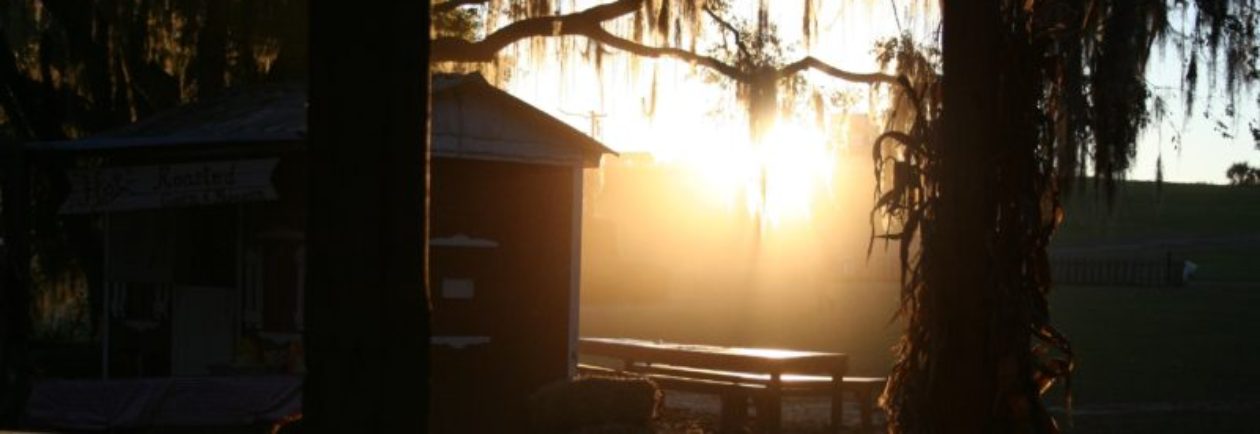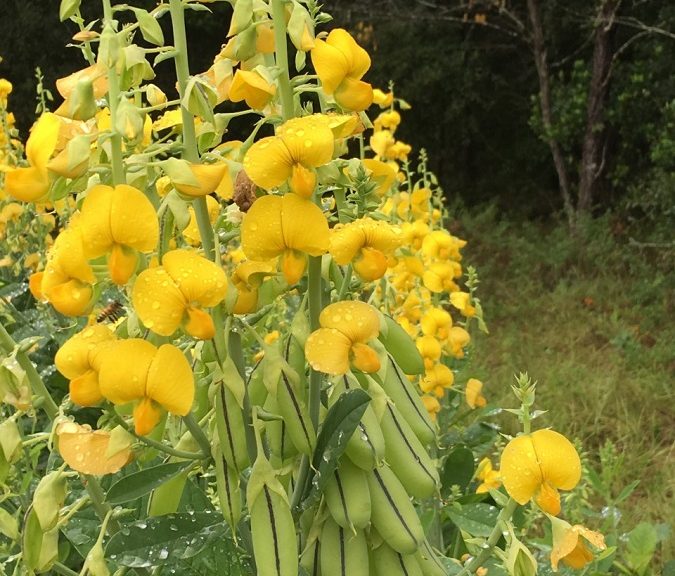by Jennifer Odom
My sister was our town’s self-appointed crotalaria-killer. In her childhood quest to persuade my dad to get her a horse, she scouted every inch of our back field. She located and yanked out every crotalaria plant she could find and then some throughout the neighborhood. If she ever did get a horse it would never be poisoned. Not on her watch.
Well, sad to say, that field was ready for a horse, but Dad never was.
Showy Crotelaria is an attractive weed, and tall like a snapdragon with yellow sweet-pea-like flowers. It grows up to six feet tall.
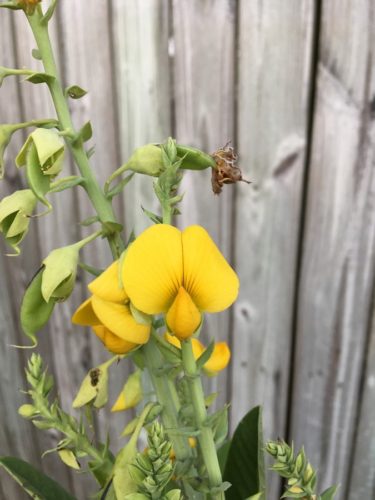
In the fall it grows in small clusters or scatterings along the roadside among the goldenrod and Johnson grass.
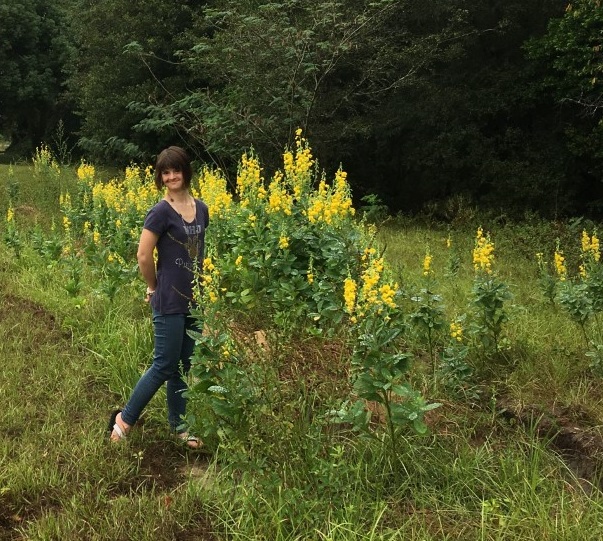
Another name for the plant is showy rattlebox. Its seeds grow in cylindrical cases that look like inflated English pea pods. The dried pods produce a rattling sound when shaken. The green pods we called poppers. As children we gave them a squeeze for a different kind of noise. (For a similar noise, for children raised without the benefit of living in the country, they might substitute bubble-wrap).
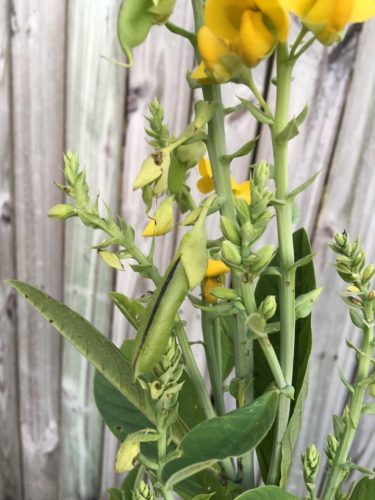
Crotalaria, a legume, was brought over from Asia for use as a cover crop (like beans and peas are commonly used), to fix nitrogen in the soil. This seemed like a great thing. It worked.
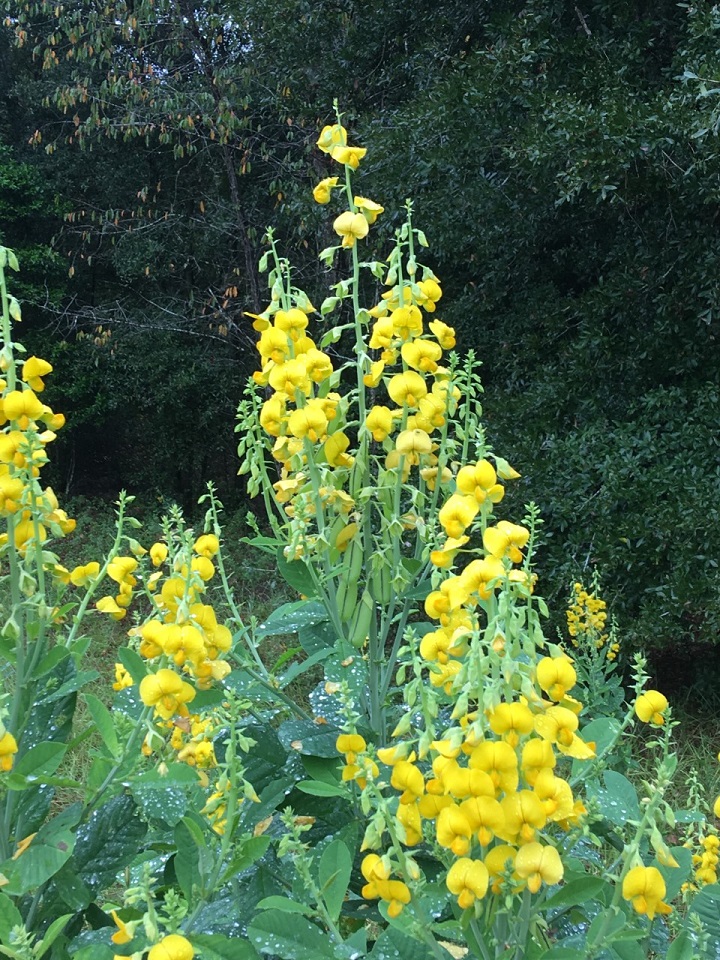
However, farmers soon found that showy crotalaria is toxic to game birds, dogs and many farm animals, including cows, horses, mules, goats, sheep, pigs, and chickens.
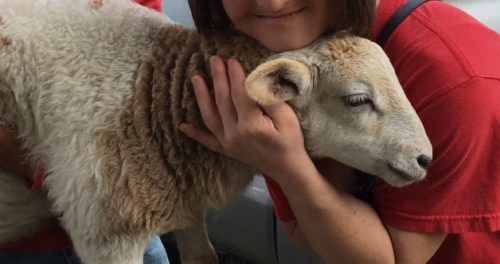
My sister may have been mistaken when she told me that eating crotalaria would result in a horse’s or cow’s stomach swelling up and exploding, but she got her point across.
Crotalaria does contain pyrrolizidine alkaloids, substances which can cause photosensitization in some animals, and liver disease, including tumors. Symptoms can appear within a few days after consumption or up to 6 months later, and seeds are the most toxic part of the plant.
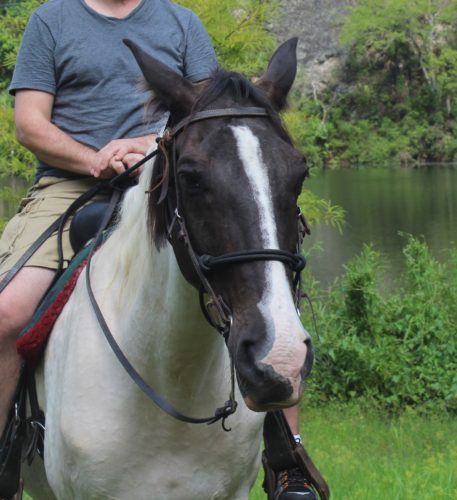
Despite these facts, one can still purchase the seeds online for their flower gardens. (Imagine, buying a poison weed! But I get it. The flowers are pretty.)
If one does decide to plant crotalaria in the flower garden, they should be sure to keep their pets away.
Oh, and sis did grow up and get the horse she’d always wanted. But that’s another story for another day.
You can be sure, though, there was no crotalaria in that horse’s field.
